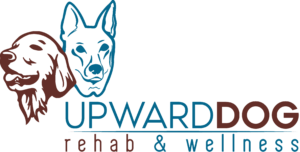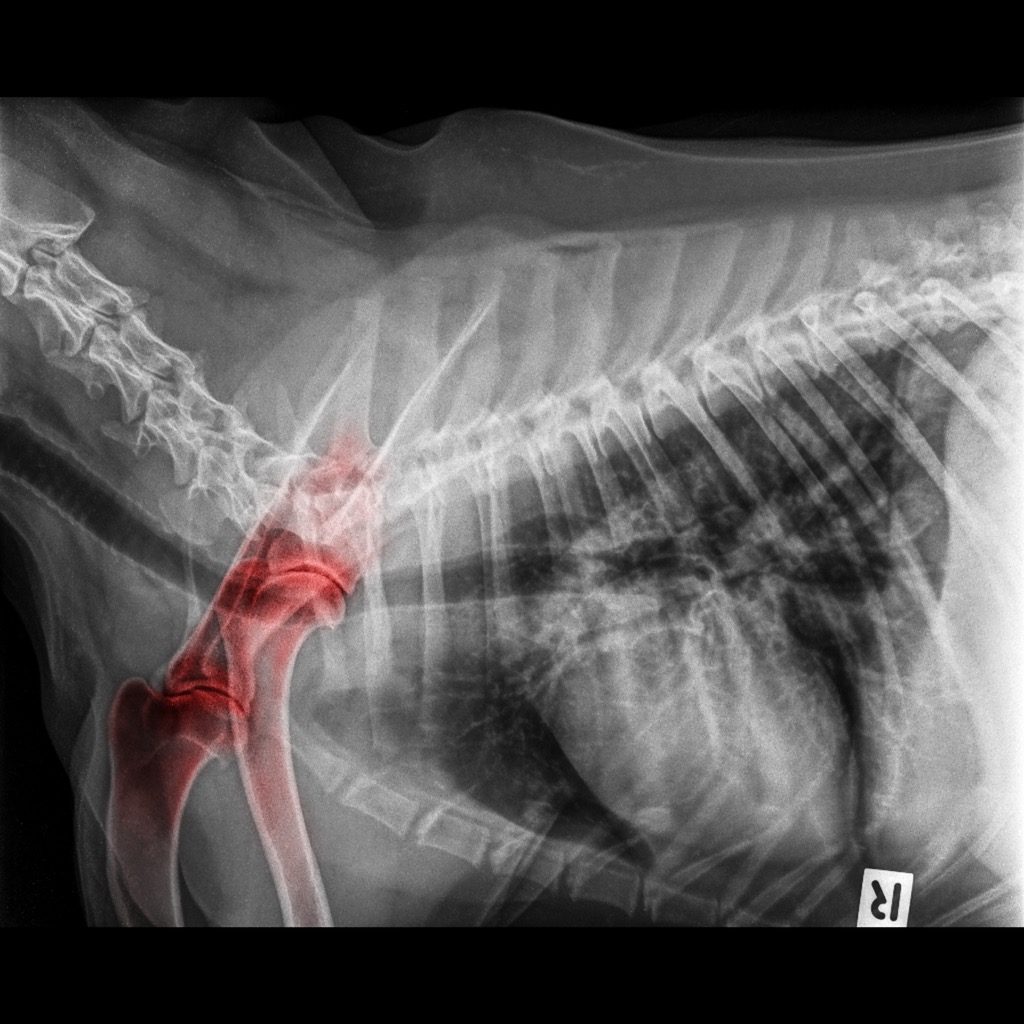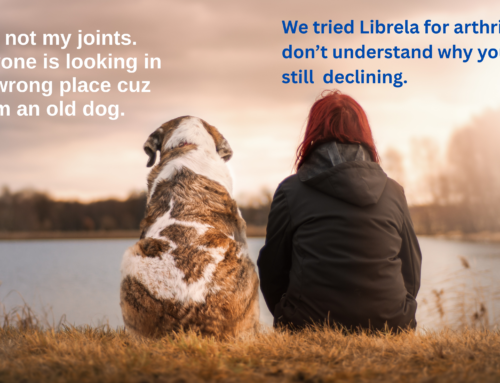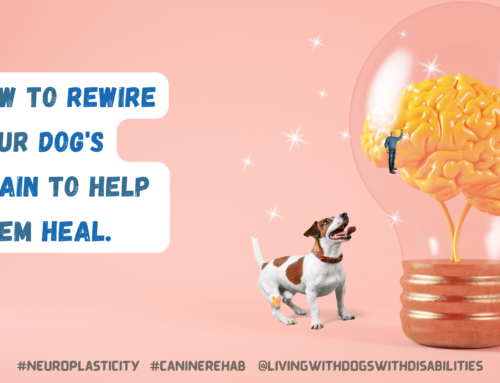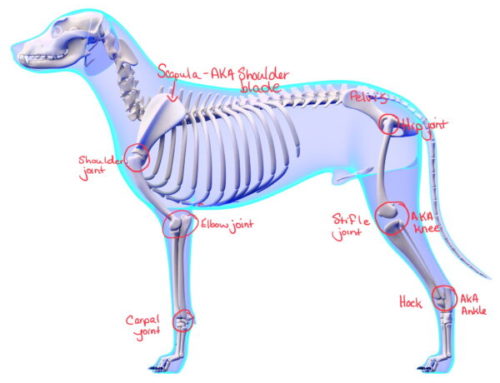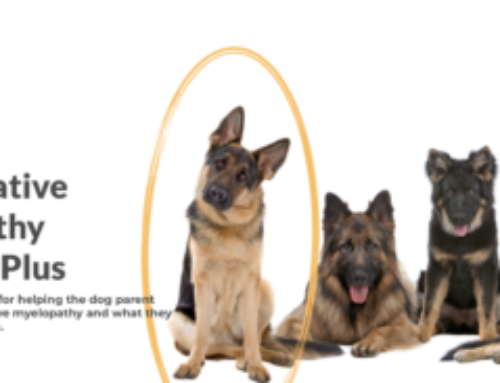The Arthritis Pain Dilemma
Your dog looks stiff and is having issues getting around and going for regular walks. They may have a diagnosis of osteoarthritis or degenerative joint disease, a form of arthritis that worsens overtime. You’re advised to do less activity with them and that they may need some medication to manage the pain.
WHAT IF I TOLD YOU THAT YOU CAN DECREASE PAIN NATURALLY AND SLOW THE DISEASE PROGRESSION AND STILL ENJOY WALKING YOUR DOG?!?
LETS GO A LITTLE DEEPER INTO WHAT THIS DISEASE LOOKS LIKE IN A DOG AND WHAT IS ACTUALLY HAPPENING
WHAT ARE THE SYMPTOMS?
The symptoms look the same as they do in people. Overtime, a dog with this type of arthritis develops chronic pain and stiffness, which leads to a decrease in activity. A decrease in activity causes loss of strength and weight gain, which leads to more pain and stiffness. In the end both of you are less active and unhappy. Sadly, a lack of activity actually creates a negative spiral that speeds up this condition.
WHAT IS ARTHRITIS?
Arthritis basically means inflammation (‘itis’) of one or more joints (‘arthro’) in the body. While there are several types of arthritis, one of the most common is osteoarthritis which is a “degenerative joint disease” (DJD). The most recent stats say 1:5 to 1:4 dogs are affected by DJD.
WHAT DOES AGE HAVE TO DO WITH IT?
Age is one of the greatest risk factors for DJD however it is not the cause . Aging often results in metabolic changes (chemical reactions in the body) and an overall decrease in activity. The result is a decline in muscle mass (atrophy) and strength.
RISK FACTORS
Other risk factors for DJD and associated pain include:
- genetics
- obesity
- improper nutrition
- infections
- injuries (i.e. fractures, muscle strains, etc)
- lack of physical activity
- poor health / other diseases (i.e. lyme disease, diabetes, etc)
TRIGGERS
In addition to the above risk factors, research has shown that the following can cause flares of pain in arthritic joints:
- changes in barometric pressure (i.e. rain, snow, storms)
- cold weather
- sudden weight gain
- repeated movements (i.e. always jumping out of the car and making a quick turn to the right and never going left)
- inflammatory foods (synthetic and/or starchy)
- stress
- intense exercise
WHY IS OA OFTEN DESCRIBED AS “WEAR AND TEAR” IN A JOINT?
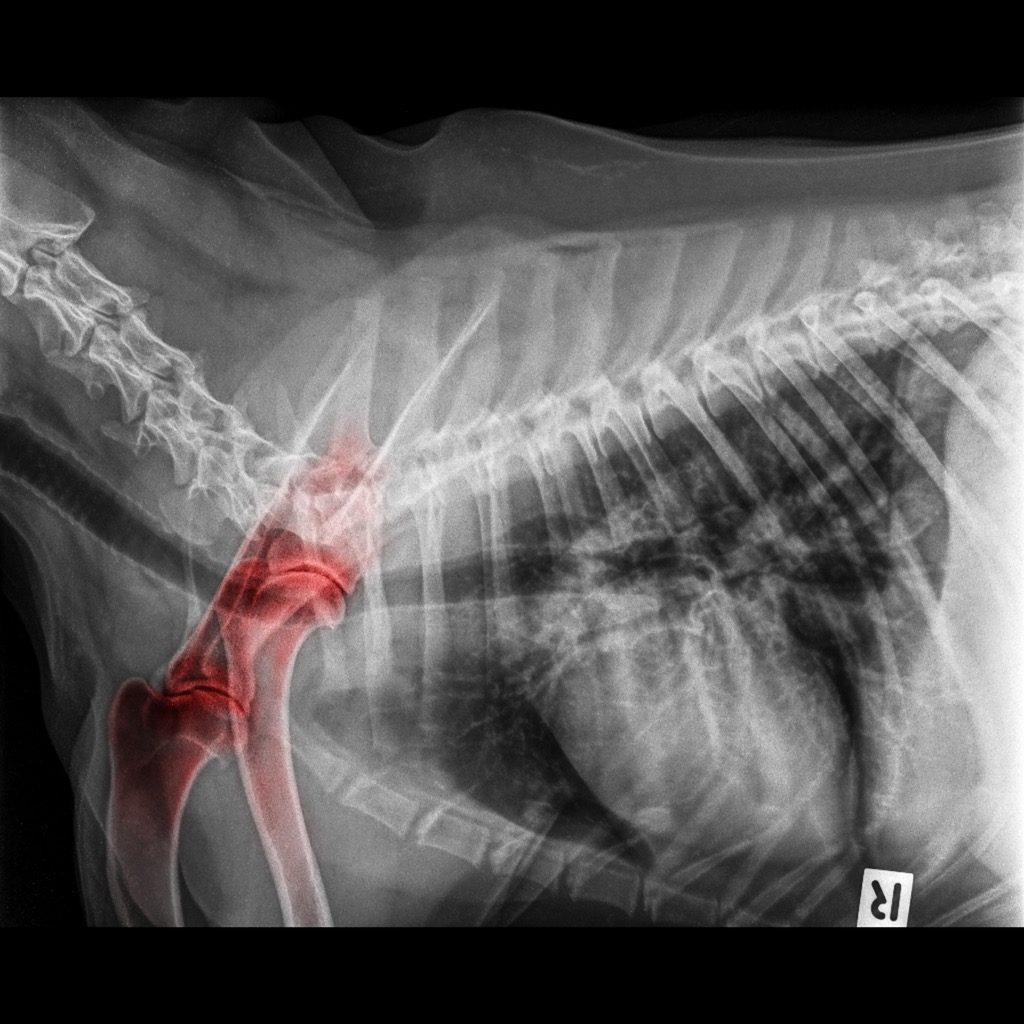
In a healthy joint, cartilage, a cushiony/slippery cap protects the end of bones. DJD is characterized by a breakdown of this cartilage over time. According to Harvard Medical School, this breakdown causes inflammation and pain in the joint and often this pain radiates into the surrounding tissues (muscles and ligaments).
Everywhere in the body, tissues are always breaking down (degeneration) and being replaced by new ones (regeneration). In joints affected by DJD, the balance between degeneration and regeneration is not maintained and there is more breakdown then building up of cartilage.
The question is then, what can we do to maintain/re-establish the balance in the joint?
MOVEMENT IS MEDICINE
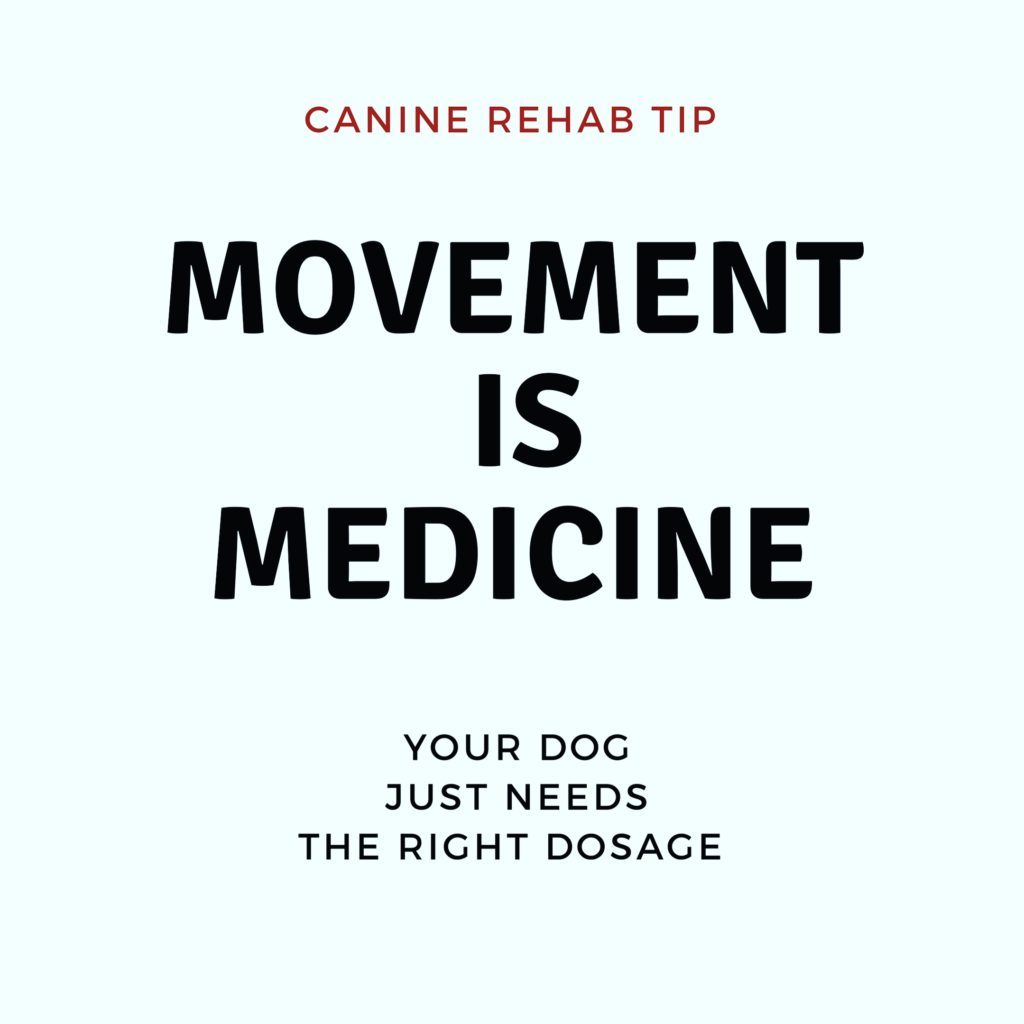
Physical activity (movement) is a critical part of arthritis management in people so why would it be any different for our furry friends?
Cartilage needs movement to stay healthy!
HOW DOES MOVEMENT/EXERCISE HELP MY DOG?
Movement….
- lubricates the joint. There is also natural fluid around joints (synovial fluid) that helps keep cartilage healthy and reduces friction in the joint. Movement helps to stimulate production.
- improves blood flow (circulation) providing nutrients to the joints and surrounding tissues
- removes cellular waste (dying cells, etc).
- builds muscles strength to support the joints
- helps stimulate new cartilage and decreases inflammation!
Scientists are still understanding this process of how exercise stimulates anti-inflammatory reactions in the joints and the activation of genes related to rebuilding cartilage.
An important factor on that last note, it isn’t just any exercise. Too much exercise or stress on the joints will have an opposite effect and result in flares of pain!
SO HOW MUCH EXERCISE?
The type and amount of exercise….. depends.
The symptoms of arthritis are not linear. Any person out there with OA knows that you have good days and bad days. So what does that mean for your dog and activity levels?
How much and what kind of activity is going to depend on a lot on pain and stages of the disease. From a physiotherapy perspective, we often refer to “loading” when we talk about arthritic joints. If there is a lot of pain we want “low loads” or less force through the joints but still encourage movement. Range of motion (AROM / PROM) is a low load activity.
RANGE OF MOTION & FLEXIBILITY
During range of motion exercises, the pet owner supports the affected limb above and below the joint and then, very gently helps the dog move the lower part of the limb. This is like greasing a bike chain. You put a little oil in one spot and then rock the peddles back and forth, spreading out the grease until you cover the full chain.
Massage and gentle stretching are also good for stimulating blood flow and making moving joints, easier. Always start with a gentle touch and gauge how your dog responds. If they aren’t into it, it isn’t therapeutic.
Quick note on ROM exercises and dogs with paralysis. Its very important! A dog with paralysis can often still experience pain and since they can’t move their own limbs, it’s important you do this for them.
It is strongly recommended that you seek out a rehab professional to assist you in learning how to safely and effectively do ROM exercises with your dog.
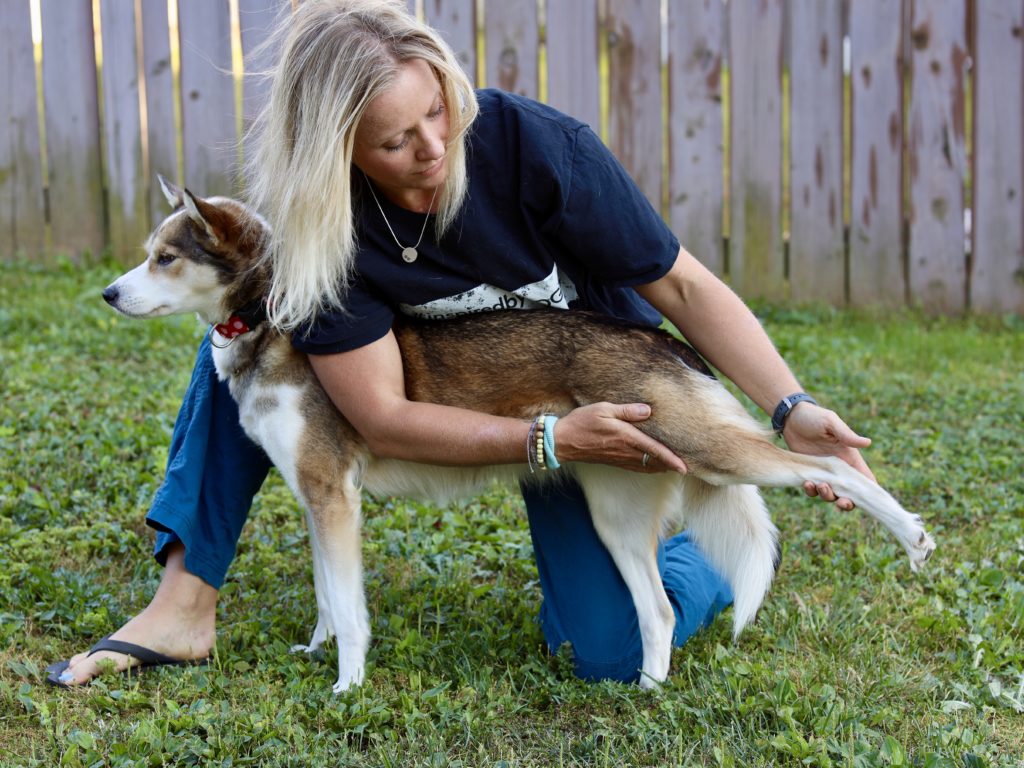
STRONG & STABLE
A joint should fit together like a puzzle piece, but once the cartilage starts to break down, it no longer gets that tight fit and the joint no longer moves properly. This is sometimes referred to as “dysplasia”. Sometimes, when things don’t fit together properly, the ligaments around the joints loosen and the body responds by creating bone spurs to provide more stability. This is one of the reasons strength is so important for our furry friends. Bone spurs are painful!
Strength exercises should focus on function (i.e. standing, walking, sit to stand, etc). Things done statically (no movement) are a good place to start, gradually increasing difficulty to more functional movements. Strengthening exercises put more “load” through the joints.
Types of strengthening include:
- ISOMETRIC exercises the muscle contracts to hold the body in one position
- = LOW load
- CONCENTRIC exercises the muscle contracts to move body parts
- = MODERATE load
- ECCENTRIC exercises the muscle contracts to slow the body down against gravity
- = HIGH load
BALANCE & BODY AWARENESS TO HELP STAY UPRIGHT!
There is a less body awareness in arthritic joints and therefore less balance. To ensure the safety of your dog, slippery surfaces should be avoided. Exercises that focus on balance and body awareness are very important for dogs with DJD. Introducing things like balance cushions during exercises can challenge balance and help with body awareness. If you don’t have a balance cushion, try folding a yoga mat over several times.
AEROBIC EXERCISE FOR HEART HEALTH
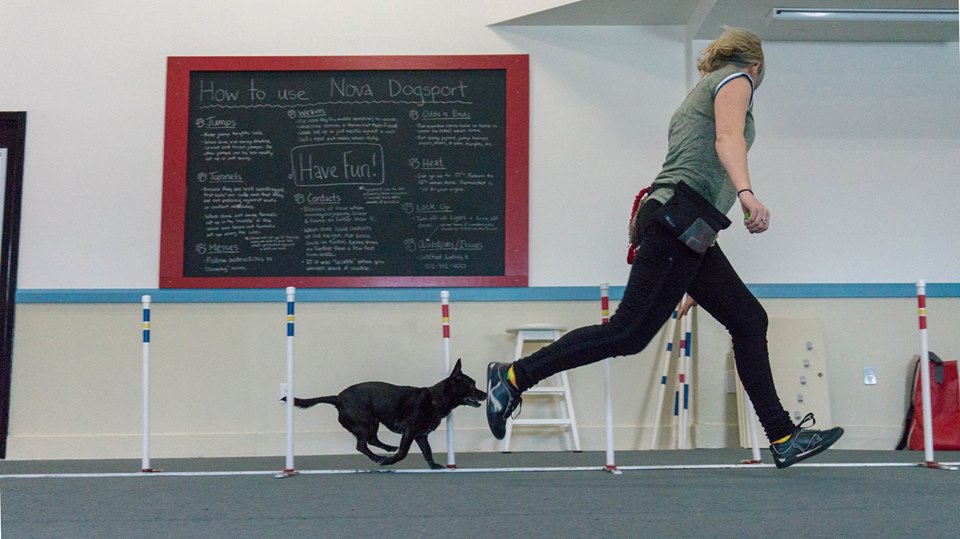
Dogs are meant to walk, as are we! Aerobic health keeps the body healthy, the mind happy, and helps maintain a good body weight.
Loading comes into play with aerobic exercise too.
The faster the movement the more force that goes through a joint. So when joints are painful, we want our dogs to move slower. Games of fetch can cause joint and tissue pain if a dog is already showing some soreness. Going up and down hills also adds more force, especially down! Uphill can be a nice strengthening activity as long as it doesn’t make your dog worse.
Shorter and more frequent walks have been shown to be easier on the joints while still having a healthy effect. Watch out for really hard surfaces or ones that have really complicated footing as they may worsen arthritic joints. Swimming and walking in deep water (sandy bottom or underwater treadmill) are great for cardiovascular health and low loading through the joints!
WHAT CAN I DO AROUND MY HOME?

A dachshund dog, black and tan, sits on a home ramp. Safe of back health in a small dog.
A good tip for maintaining strength is do things in your home that encourage your dog to move independently and allow you to assist easily
These include:
- Investing in a ramp for your vehicle instead of picking your dog up. If you hurt your own back, how can you help your dog?
- Providing a bench or stool for them to get get onto furniture (if they usually get on furniture).
- Using a rear harness for dogs with decreased hind end mobility so you can give them a little added support.
- Providing non slippery surfaces in your home, especially on stairs so you dog has more traction which aides in confidence and encouraging the right muscles to fire to move the body. Yoga mats are a very economical option.
- Some dogs may also do well with orthopaedic bracing that aids in stabilizing joints, increasing comfort and allowing for more movement.
- Introducing natural supplements such as omega 3 oils, turmeric, glucosamine (works best with MSM). Green lip mussel is a great anti-inflammatory!
- Talk to you vet/rehab therapist about helpful modalities and integrative treatments for pain management (i.e. acupuncture, laser therapy, cartrophen, canine rehab!, etc)
- Maintain a healthy weight!!!! Studies have shown a significant decrease in lameness in dogs with DJD with even modest weight loss.
FINAL THOUGHTS
While the above information is not to be used to diagnosis DJD in your dog or override your veterinary recommendations, I hope it does provide insight into how keeping your arthritic dog active is critical to, well, keeping them active and healthy!
A canine rehab therapist can also assist you in tailoring a home exercise plan for your dog.
Overall, moderate activity levels based on your dogs symptoms and occasional flare ups, have a healthy diet, manage weight, and most of all enjoy being active with your dog!
Thanks for reading and stay active! ~ Sarah and the pups.

